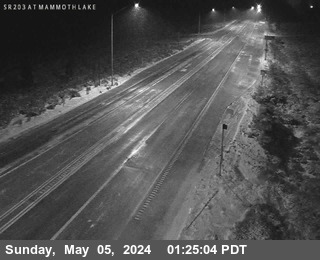Brought to you by Howard Sheckter
Archive for December, 2017
Considerable High Cloudiness will ring in the New Year…..Upper Ridge will weaken some what this new week as pattern goes into transition ….Mainly Light Precipitation to occur through early Friday….
Sunday December 31, 2017
New Years day….12:15PM
Happy New Year everyone…. Hope its a good one….
The 12Z European Ensemble forecast model was still running with the Deterministic run still showing a pattern change in the offering. QPF continues to be scaled back and that means in general that these storms are weakening as they come in, due to the west coast ridge. Light snowfall is still expected beginning Wednesday at elevations mainly above 8000 to 9000 feet. This does not appear to be a plowable storm for residential driveways for the vast majority of town. As per this mornings CA Rivers Forecast Center, The Dweebs are not expecting much more than a few inches from this system, even over the higher elevations. Looking at the 5 day means on the last ensemble run, the mean ridge position over the Central Pacific is between 150E and the dateline. This is not good….
500MB heights fall over time but remain higher than normal. As mentioned earlier, the European model which is usually better at distance is showing a colder system for about the middle of next week with the chance of another following. These storms will most likely weaken as they come in. However, they may provide some badly needed snowfall along with temporally colder temperatures.
Later in the week 2 period the new 12Z Jan 1, ECMWF Ensemble which has just finished running, shows amplification of the Central Pacific ridge between 150E and the dateline. If this model ensembles verify’s, this in turn will ridge us back up again………
Dr Howard and the Dweebs………………….:-)
________________________________________________________________________________________________________________________________
I think that on an interseasonal scale of time, this is got to be one of the strongest and persistent Hemispheric Meridional Upper Flow patterns I can remember for a long time. The fact that the midwest and east is setting low temperature records are all part of this pattern, that is similar to the winter of 1917-18 I have read. I am sure that the -QBO combined with La Nina has something to do with it. All models have done poorly with forecasts of both timing and details of guidance in their week two forecasts. One only has to look at the non-details of the 5 day ensemble means of the ECMWF to see that a major wet pattern is not in the cards at this time. And…it is possible that we may be transiting to a pattern of one that is marginally wet before we go dry again. We’ll see how the next 6 to 10 days develop in the week 2+ guidance.
On the bright side, it does look like that we may get one decent colder storm the following week, the week beginning the 8th. That may be enough to greatly improve our spirits! The forecast for this upcoming week is one of unsettled weather with the chance of light precipitation beginning anytime mid-week (Wed) into the following week. The snow level along with the freezing level will remain fairly high, between (snow level) 8K and 9K. Based upon this mornings CRFC, the guidance suggests about 1/2 inch of water eq over Yosemite through Friday AM. I will update later New Years Day Morning. However, that does not cover a more significant system later in the weekend or early the following week. Remember, the details are very poor because of both pattern transition and the mean ridge position over the far west. The upper flow mid-week is southerly, so orographics will not be a major player in the beginning of this pattern change.
PS I am still watching the MJO to see how strong it gets and how far east it gets… That can make a big difference on how the pattern evolves…
More Later…………………….:-)




